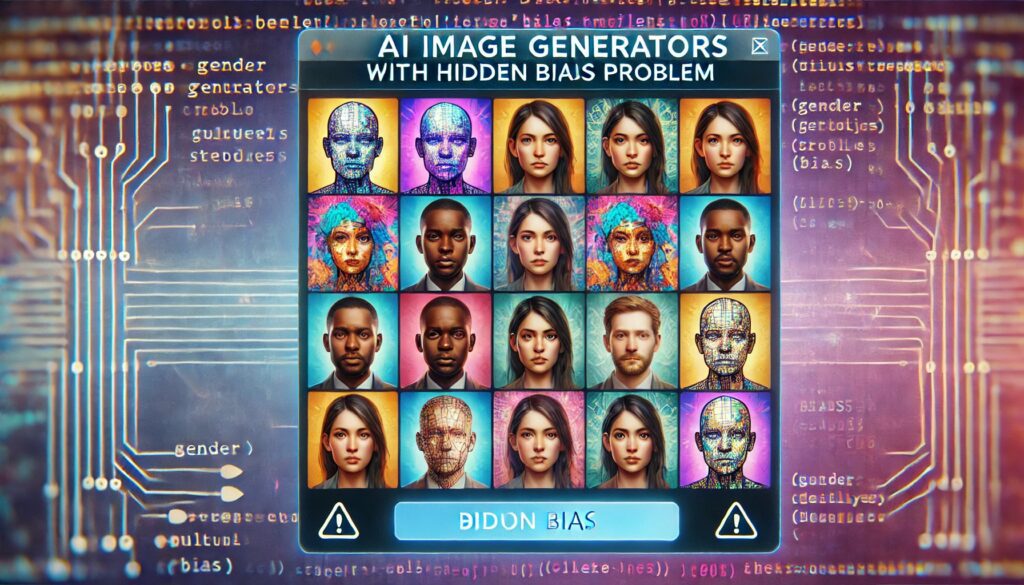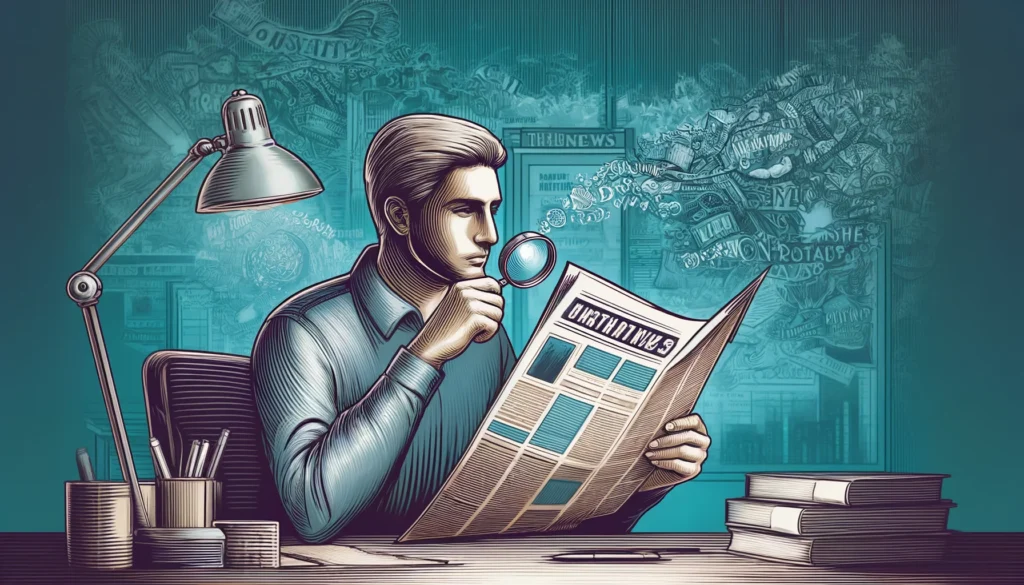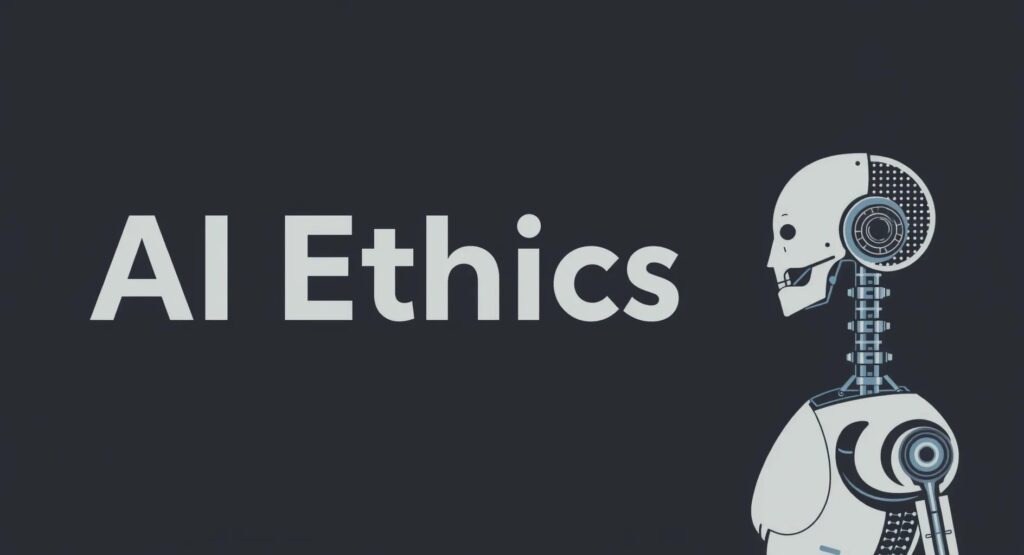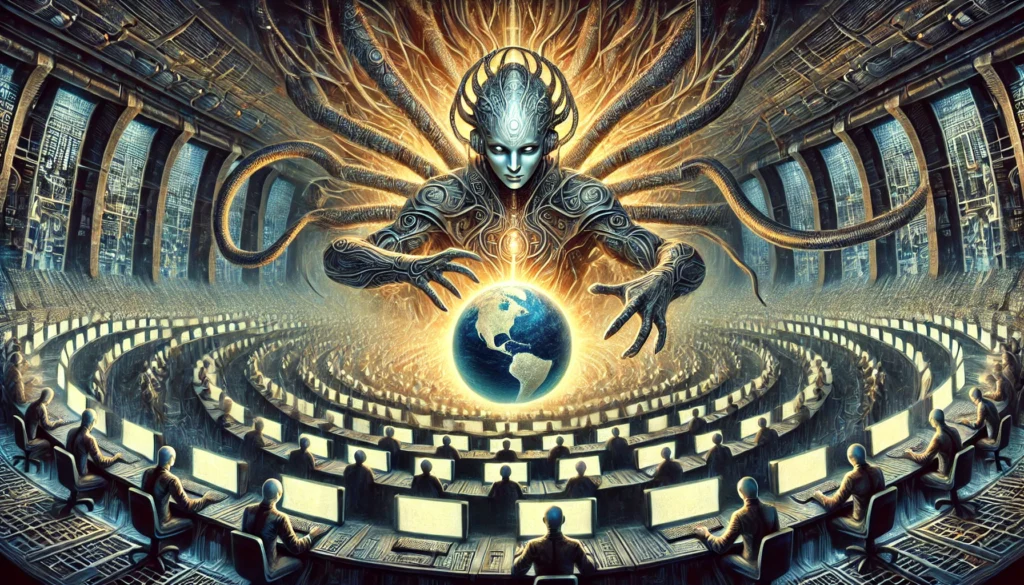
The Growing Concern: AI and Bias
Artificial Intelligence (AI) image generators like MidJourney, Stable Diffusion, and DALL-E have become increasingly popular for their ability to create stunning and realistic images from text prompts. However, with this rise in usage comes a critical issue: bias. These AI tools can inadvertently perpetuate and even amplify societal biases, leading to problematic and harmful representations.
Training Data: The Root of Bias
AI image generators are trained on large datasets sourced from the internet. These datasets reflect the biases present in society and on the internet, such as racial stereotypes, gender biases, and cultural prejudices. For instance, if a dataset contains more images of men in leadership roles and women in domestic settings, the AI will learn and replicate these associations.
Algorithmic and Output Bias
During the training process, AI models often overfit to the biases present in the data. This means they may produce outputs that reinforce stereotypes. For example, research has shown that AI models tend to generate images that exaggerate stereotypes, portraying certain demographics in limited and often negative contexts.
Examples of Bias in AI Image Generators
A 2024 study highlighted that DALL-E 3 exhibited biases in 11 out of 13 tested stereotypes, showing the highest percentage of biased images among several platforms. Common biases included gender stereotypes in professions like “scientist” and “CEO” and racial stereotypes in keywords like “basketball player” (Nature) (vpnMentor).
User Influence and Feedback Loops
User prompts play a significant role in shaping the outputs of AI image generators. If users frequently request images that reflect certain stereotypes, the AI adapts to these requests, creating a feedback loop that further entrenches these biases. This dynamic makes it challenging to mitigate bias without significant changes to the model’s training and usage protocols.
Development and Transparency Issues
The lack of diversity within AI development teams can contribute to the perpetuation of bias. Homogeneous teams may lack the perspectives needed to identify and address biases effectively. Furthermore, the black-box nature of AI models makes it difficult to understand and rectify biased outputs, leading to a lack of accountability.
Societal Impact
The widespread use of biased AI-generated images can reinforce harmful stereotypes and social norms, affecting public perception and contributing to discrimination. For example, if AI consistently portrays women in caregiving roles and men in leadership roles, it can influence societal expectations and professional opportunities.
Addressing the Problem
To tackle the issue of bias in AI image generators, several strategies can be implemented:
Bias Audits
Regular audits of AI models and their outputs can help identify and address biases. These audits should involve diverse teams to ensure a broad range of perspectives.
Diverse Training Data
Ensuring that training datasets are diverse and representative of different demographics and contexts is crucial. This can help the AI learn more balanced and fair representations.
Inclusive Development Teams
Promoting diversity within AI development teams can bring various perspectives into the design and training process, helping to identify and mitigate biases.
Transparency and Explainability
Developing tools and techniques to make AI decision-making processes more transparent can help users and developers understand why certain outputs are generated and how to correct biased behaviors.
The Role of Training Data in AI Bias
Training data is the foundation of AI image generators. These models learn from vast datasets of images and captions available on the internet. However, the internet is rife with biases, reflecting societal stereotypes. This results in AI systems that mirror and sometimes amplify these biases.
AI Image Generators: Can They Fix Racist and Sexist Biases?
AI image generators have a notorious history of producing racist and sexist results due to biased training data. These systems learn from large datasets collected from the internet, which often contain inherent societal biases. When these biases are not addressed, the AI models tend to replicate and even amplify them, resulting in problematic outputs.
Interviews and Expert Insights
Interview with Dr. Timnit Gebru
Dr. Timnit Gebru, an expert in AI ethics, highlights that biased datasets are a significant problem. In an interview, she pointed out that AI models trained on uncurated internet data often inherit and perpetuate harmful stereotypes. For example, if the data predominantly shows women in domestic roles and men in professional roles, the AI will likely generate images that reinforce these stereotypes.
Insights from Dr. Joy Buolamwini
Dr. Joy Buolamwini, founder of the Algorithmic Justice League, emphasizes the importance of algorithmic transparency. In her work, she has shown that AI systems can exhibit racial and gender biases, such as underrepresenting people of color or depicting them in negative contexts. She advocates for regular audits and the inclusion of diverse perspectives in AI development to mitigate these issues.
Research Findings
A study published in Nature found that AI image generators like DALL-E 3 exhibited biases in over 80% of tested stereotypes. For example, prompts related to professional roles often resulted in images that aligned with traditional gender roles—depicting scientists as predominantly male and nurses as predominantly female. This research underscores the need for more balanced and representative training datasets (Nature) (vpnMentor).
Mitigation Strategies
- Diversifying Training Data: Ensuring that datasets are representative of different genders, races, and cultures can help reduce bias. This involves actively curating data to include a wide range of demographics and contexts.
- Inclusive Development Teams: Having diverse teams involved in the development of AI technologies can bring varied perspectives, helping to identify and address biases that homogeneous teams might overlook.
- Regular Audits and Transparency: Implementing regular bias audits and making the decision-making processes of AI systems more transparent can help in identifying and mitigating biases early on.
- User Education: Educating users about the potential biases in AI-generated content and encouraging them to use these technologies responsibly can also play a role in reducing the impact of bias.
Conclusion
The challenge of bias in AI image generators is significant but not insurmountable. By implementing comprehensive strategies that address the root causes of bias, promoting diversity and transparency, and continually auditing AI outputs, we can work towards creating AI systems that are fairer and more inclusive.
AI has the potential to transform many aspects of our lives positively, but only if we ensure that it operates without reinforcing harmful biases and stereotypes.
Further Reading
For more information on this topic, consider exploring the following resources:
- Nature
- Science News Explores
- NewZealand.AI
- vpnMentor
- AI-Washing
- AI Act Startups
- Explainable AI





